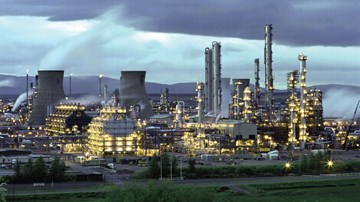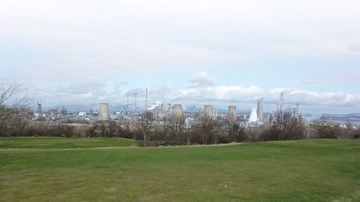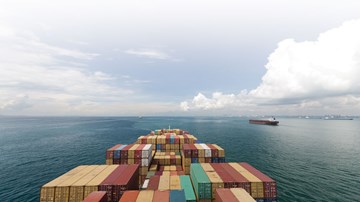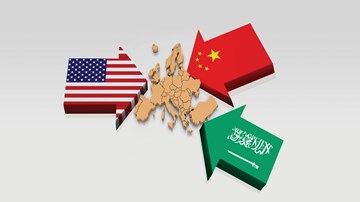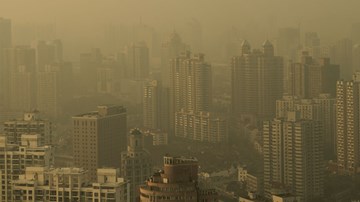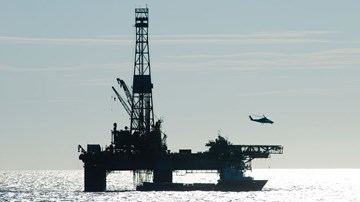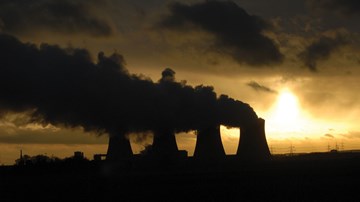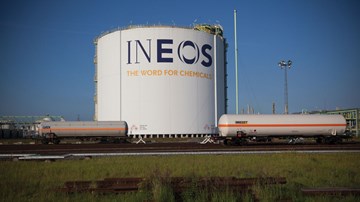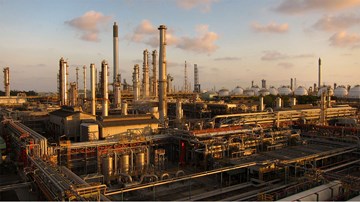China is entering a new and an exciting phase. It needs to continue to provide the chemical raw materials to help deliver growth and it needs to tackle the pollution that is choking its cities, by cutting its CO2 emissions. It cannot do it alone. It needs help from innovative, energy-efficient companies that have the technical expertise together with proven safety records. Companies like INEOS.
The Chinese dragon – long seen as a symbol of power, strength and good fortune – has so far served its leaders well.
It has witnessed the meteoric rise of China from a small, emerging market into the second biggest economy in the world – and it is even now snapping at America’s heels.
But that unprecedented, rapid growth, driven largely by exports and heavy manufacturing, has come at a huge cost to the environment, with China now emitting more CO2 gases than any other country in the world.
The world’s perception is that China cares little for the environment.
But China’s leaders are no longer willing to accept that.
Their latest Five-Year Plan marks a dramatic turning point in their thinking.
For years, China has been focused on exports. Now it is looking closer to home.
Chinese Business are being actively encouraged to form partnerships with Western companies to help them improve energy efficiency and achieve growth, detailed in the plan.
“The seeds were sown in that Five-Year Plan,” said Rob Nevin, CEO of INEOS Nitriles. “The door is open for business.”
Earlier this year China formed joint ventures with two of INEOS’ world leading businesses. INEOS Nitriles and INEOS Phenol – to build the largest phenol facility in China and a world-scale acrylonitrile plant to satisfy the growing domestic demand for their petrochemical products.
“It’s incredibly exciting,” said Rob. “China is the engine room for petrochemicals and chemicals in terms of demand. And it is the engine that will pull the world.
“For INEOS it is an opportunity for us to operate in the largest market in the world.
“We wanted to expand and INEOS’ market position and technological know-how meant we were the ideal choice.”
China was often referred to as a second planet earth.
“You have to go there to appreciate the scale of the place,” he said. “I have lived in the US but China is like nowhere else in the world.”
INEOS Phenol is the world’s largest manufacturer of phenol and acetone. China is the world’s fastest growing market for both chemicals, which are used to produce polycarbonate, plastics, phenolic resins, synthetic fibres, such as nylon, and solvents.
INEOS Nitriles is the world’s largest producer of acrylonitrile, which is the key ingredient to make carbon fibre, and China cannot get enough of it.
Once both facilities are operational, INEOS Nitriles will be the only producer to have plants in each of the world’s largest acrylonitrile markets and INEOS Phenol will be the only company to be producing acetone and phenol in Europe, America and Asia.
“It is the leading global producers in the world entering the largest global market,” said Rob. “It’s the perfect marriage.”
INEOS Phenol’s joint venture with Sinopec Yangzi Petrochemical Company will lead to the creation of a 1.2 million ton cumene, phenol and acetone complex at Nanjing Chemical Industrial Park in Jiangsu Province.
The plant, which will be capable of producing at least 400,000 tons of phenol and 250,000 tons of acetone every year, is due to start satisfying China’s needs by the end of 2016. The new plant will also allow INEOS’ European and US plants to focus on growth in their own markets.
“This mutually beneficial partnership is an important development for INEOS Phenol and for INEOS in China,” said Harry Deans, CEO of INEOS Phenol. “It’s also the largest capital investment ever undertaken by INEOS.
“Combining a strong, local partner like Sinopec YPC with our leading phenol technology and access to the market brings considerable value to our business and our customers.”
INEOS Nitriles has gone into business with state-owned Tianjin Bohai Chemical Industry Group Corporation.
Together they plan to build and operate a world-scale acrylonitrile plant in Tianjin, which will be designed using the latest INEOS process and catalyst technology.
“We have not started building yet because we haven’t finalised the details, but we have aspirations,” said Rob.
“We are widely viewed as the industry safety leader and we intend to bring our very high standards to China.
“Safety performance is not great in China but they hope to learn from the way we do things, both in terms of personal safety and our processes. They want high Western standards.”
Joint ventures of this type and scale with foreign companies are what China’s leaders want to help it tackle the problems of the past and create a more sustainable economy.
Their clear, long-term vision to shift to a highly-efficient, low carbon economy – using advanced, manufacturing technology – is laid out in the China State Council’s 12th Five-Year Plan.
Under the plan, China’s leaders promise to:
-
Set new limits on energy consumption
-
Clamp down on companies and industries that consume a lot of energy but produce very little
-
Cut carbon emissions by up to 45% by the year 2020
-
Reduce China’s reliance on fossil fuels, especially coal
-
Invest in energy-saving technology, and
-
Tackle pollution
-
It’s a challenge but China’s leaders believe it is achievable.
Rob, who worked for BP for 25 years, said the speed at which INEOS worked also appealed to the Chinese.
“INEOS is a slim, slick and easy company to work with and it’s made a massive difference,” he said. “The contrast between BP and INEOS, in terms of getting something approved, is like night and day.”
He said once INEOS Nitriles had agreed on the right project, the right structure and the right location, the proposal was put to chairman Jim Ratcliffe who approved it.
“Sometimes things can be approved at a frightening speed,” said Rob who has worked for INEOS for eight years. “But then you have to deliver.”
That said, though, Rob explained that the Chinese approval processes had got more and more difficult over the years.
“Ten years ago you could have started building anywhere and faced a fine,” he said. “If you ignored that today, construction can be stopped. Today there is an unprecedented level of care and diligence for the environment and its people.”
And that, he said, was understandable.
“Pollution in China is something that touches people’s lives,” he said. “In the major cities people wear face masks because it can be so bad.”
Air pollution is now the biggest cause of civil unrest in China, with The World Bank estimating that 16 of the world’s 20 most polluted cities are within China’s borders.
The Chinese Society for Environmental Sciences said the number of protests over pollution in China had increased by about 29% every year since 1966.
“In 2011, the number of major environmental incidents, though, actually rose 120%,” said the society’s vice-chairman Yang Zhaofei.
In September, the authorities in Beijing unveiled their own five-point plan to tackle pollution in the capital.
“What’s new about this is the level of real determination and the level of detail,” said Alvin Lin, China Climate and Energy Policy Director with the Natural Resources Defense Council in Beijing. “There is a new resolve to do something serious about air pollution.”
The World Resources Institute said China and the US were currently to blame for 43% of global emissions.
China’s problem is that it relies so heavily on coal.
“Coal provides China with 70% of its energy and nearly 80% of its electricity,” said Luke Schoen, who wrote a report for The World Resources Institute.
Although it has vast domestic coal and gas resources, it has problems accessing it, so it increasingly relies on foreign imports. Its oil comes from the Middle East and Africa, its coal from Australia and Indonesia and its gas from Central Asia and Australia.
“China’s leaders acknowledge that the country’s dependence on carbon for energy is a problem,” said Luke. “And that growing dependency on foreign energy is a strategic concern among China’s leaders.”
China has discovered huge areas of shale gas but – unlike USA – it does not yet have the breakthrough technology to access it.
In the meantime, China’s leaders are concentrating on maintaining growth whilst developing policies to cut carbon emissions and deploy more clean energy.
“China actually already invests more in renewables than any other nation,” said Luke.
In 2011 it invested $52 billion in renewable energy resources which rose to $67.7 billion last year, 50% more than the US.
While other nations may view clean energy as a costly drag on economic growth, China does not.
It believes its latest policies will help it to maintain its position as a major global player while tackling climate change – something that it believes poses a significant threat to its long-term prosperity.
“By its own estimates, China ascribed $50 billion in direct economic losses to natural disasters in 2011,” said Luke.
“And one independent study estimated that that figure could increase to nearly $748 billion per year by 2030 if no action is taken.”
